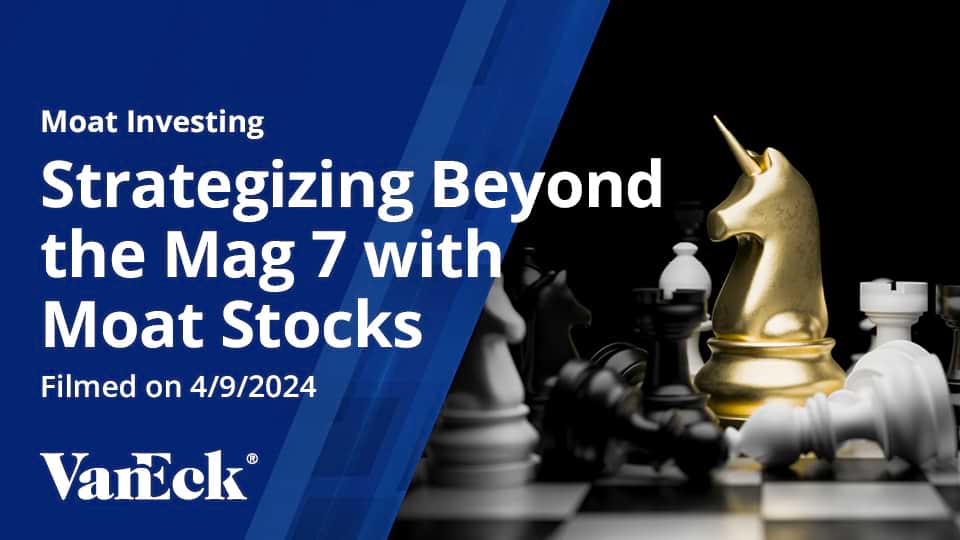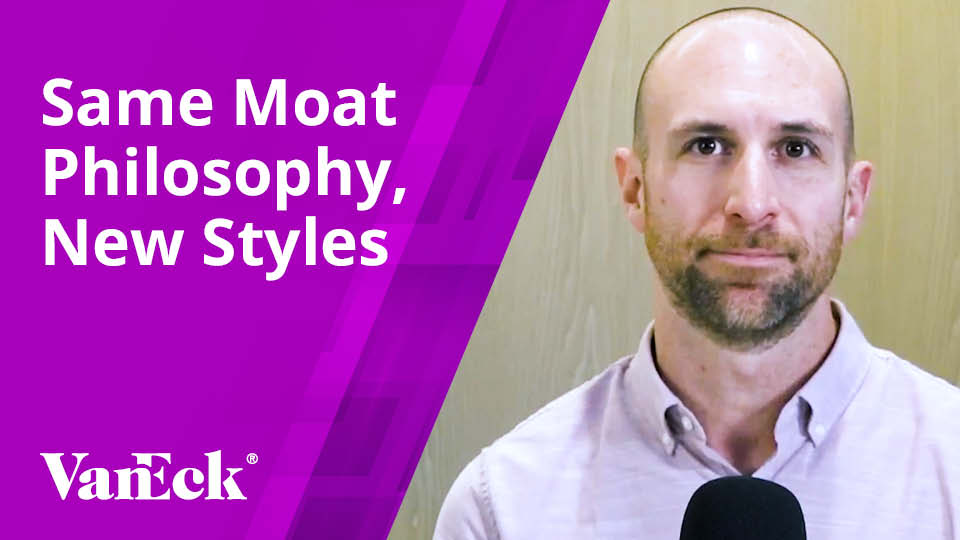An Investor's Guide to Switching Costs
August 09, 2023
Read Time 5 MIN
The term “economic moat” describes a company’s ability to maintain its competitive advantages and defend its long-term profitability. This moat investing education series explores the five primary sources of moat, according to Morningstar: 1) switching costs; 2) intangible assets; 3) network effect; 4) cost advantage; 5) efficient scale. Here we explore the concept of switching costs.
Introduction: What Are Switching Costs?
Switching costs refer to the financial and non-financial factors that deter customers from switching to alternatives. Switching costs can include termination fees, setup expenses, additional charges, time-consuming tasks like data transfer, retraining, and the risk of a new product falling short of expectations. In other words, switching costs are present when a customer’s cost of switching to a new supplier exceeds the value they would enjoy from making the switch. Switching costs endow the incumbent supplier or provider with pricing power that can, in turn, lead to economic profits.
From an investment perspective, understanding switching costs is important because they can provide a company with the leverage to increase prices and deliver hefty profits over time. Switching costs also create barriers to entry in certain industries, making it difficult for new competitors to gain ground. This stability can offer more secure and promising investment prospects.
Why Switching Costs Matter for Investors
Analyzing switching costs helps investors evaluate the stickiness of a product or service within its target market. Higher switching costs indicate greater customer retention, reducing the likelihood of customer churn. This stability provides insights into the sustainability and profitability of an investment.
Investors should also consider the impact of switching costs on market dynamics. Industries with substantial switching costs give companies a competitive advantage. Customer retention due to high switching costs leads to reduced price sensitivity and increased customer lifetime value.
By understanding the factors influencing switching costs, investors are in a better position to evaluate market opportunities and identify investments with competitive advantages. Incorporating switching costs into investment strategies provides a comprehensive perspective and enhances the potential for long-term investment success.
How Companies Use Switching Costs Build Moats
The term “economic moat” describes a company’s ability to maintain its competitive advantages and defend its long-term profitability. Powerful moats can be built on switching costs, which lock customers into a company’s unique ecosystem and make it expensive to move. In the examples below, we demonstrate how companies use switching costs to their advantage and grow over time.
Customers Get Locked-In by Switching Costs
Switching costs are present when a customer’s cost of switching to a new supplier exceeds the value they would enjoy from making the switch. Switching costs endow the incumbent supplier or provider with pricing power that can, in turn, lead to economic profits.
Switching Costs: When it would be too expensive or troublesome to switch away from a company's products, that company often enjoys pricing power.
Not just monetary in nature, switching costs can also be measured by the effort, time, and psychological toll it takes to switch to a competitor.
Switching costs provide a company with the leverage to increase prices and deliver hefty profits over time. They are a key competitive advantage and are evident in a range of industries, from banks, to computer software/hardware, to telecoms, among others.
Examples of Switching Costs in Action
Gillette Razor Blades – Designed to Create Brand Attachment
King Camp Gillette, the inventor of the first mass produced safety razor, was one of the first entrepreneurs to optimize the switching cost approach to lock in customers. In 1902, Gillette developed and began selling inexpensive razors with disposable blades that he had patented. This ensured Gillette a constant high demand for blades, as customers who considered other blades quickly realized that they would incur the cost of a new razor as well.
Stryker Corp (SYK)
Stryker Corp. (SYK) is a top-tier competitor in a number of medical markets. These include orthopedic implants, surgical equipment, endoscopy, and neurovascular devices. Since switching costs can be significant for surgeons when it comes to orthopedic implants, this is, according to Morningstar, one of Stryker’s “moatiest divisions” in support of the company’s wide economic moat. Morningstar adds, “Relative to other specialists, an orthopedic surgeon's skill and experience can play an outsize role in the clinical outcome for the patient. These factors leave surgeons reluctant to train and master multiple instrumentation systems.”
Salesforce
Salesforce.com Inc. (CRM) is a leader in providing cloud-based solutions that address many aspects of customer acquisition and retention. According to Morningstar, its salesforce automation application is “mission-critical software that helps drive revenue for users.” Morningstar notes the high organizational risk of moving away from the platform, as well as the time, expense, and lost productivity associated with the implementation of a new application.
Conclusion
Understanding and capitalizing on switching costs is essential for investors seeking to identify companies with sustainable competitive advantages and long-term profitability. Switching costs act as barriers that deter customers from switching to alternatives, providing companies with pricing power and customer retention. By analyzing switching costs, investors can evaluate the stability and sustainability of investments, identify companies with strong market positions, and recognize industries with high barriers to entry.
Recognizing and understanding switching costs empowers investors to evaluate market opportunities, identify companies with competitive advantages, and make informed investment decisions. Incorporating the concept of switching costs into investment strategies can lead to long-term success and capitalize on the value created by companies with strong customer loyalty and high barriers to entry.
To receive more Moat Investing insights, sign up in our subscription center.
Related Topics
Related Insights
April 10, 2024
DISCLOSURE
Company-specific information based on Morningstar analyst notes last updated as follows: Stryker Corp.: 5/2/2023; Salesforce.com, Inc.: 3/1/2023.
Please note that VanEck may offer investments products that invest in the asset class(es) discussed herein.
This is not an offer to buy or sell, or a recommendation to buy or sell any of the securities, financial instruments or digital assets mentioned herein. The information presented does not involve the rendering of personalized investment, financial, legal, tax advice, or any call to action. Certain statements contained herein may constitute projections, forecasts and other forward-looking statements, which do not reflect actual results, are for illustrative purposes only, are valid as of the date of this communication, and are subject to change without notice. Actual future performance of any assets or industries mentioned are unknown. Information provided by third party sources are believed to be reliable and have not been independently verified for accuracy or completeness and cannot be guaranteed. VanEck does not guarantee the accuracy of third party data. The information herein represents the opinion of the author(s), but not necessarily those of VanEck or its other employees.
All investing is subject to risk, including the possible loss of the money you invest. As with any investment strategy, there is no guarantee that investment objectives will be met and investors may lose money. Diversification does not ensure a profit or protect against a loss in a declining market. Past performance is no guarantee of future results.
© Van Eck Securities Corporation, Distributor, a wholly owned subsidiary of Van Eck Associates Corporation.
Related Insights
September 25, 2023
August 10, 2023
September 27, 2022
September 27, 2022
Related Funds
DISCLOSURE
Company-specific information based on Morningstar analyst notes last updated as follows: Stryker Corp.: 5/2/2023; Salesforce.com, Inc.: 3/1/2023.
Please note that VanEck may offer investments products that invest in the asset class(es) discussed herein.
This is not an offer to buy or sell, or a recommendation to buy or sell any of the securities, financial instruments or digital assets mentioned herein. The information presented does not involve the rendering of personalized investment, financial, legal, tax advice, or any call to action. Certain statements contained herein may constitute projections, forecasts and other forward-looking statements, which do not reflect actual results, are for illustrative purposes only, are valid as of the date of this communication, and are subject to change without notice. Actual future performance of any assets or industries mentioned are unknown. Information provided by third party sources are believed to be reliable and have not been independently verified for accuracy or completeness and cannot be guaranteed. VanEck does not guarantee the accuracy of third party data. The information herein represents the opinion of the author(s), but not necessarily those of VanEck or its other employees.
All investing is subject to risk, including the possible loss of the money you invest. As with any investment strategy, there is no guarantee that investment objectives will be met and investors may lose money. Diversification does not ensure a profit or protect against a loss in a declining market. Past performance is no guarantee of future results.
© Van Eck Securities Corporation, Distributor, a wholly owned subsidiary of Van Eck Associates Corporation.
Related Insights
September 25, 2023
August 10, 2023
September 27, 2022
September 27, 2022


